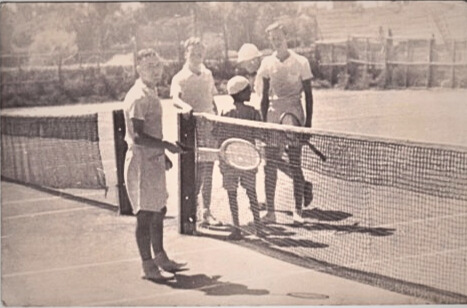
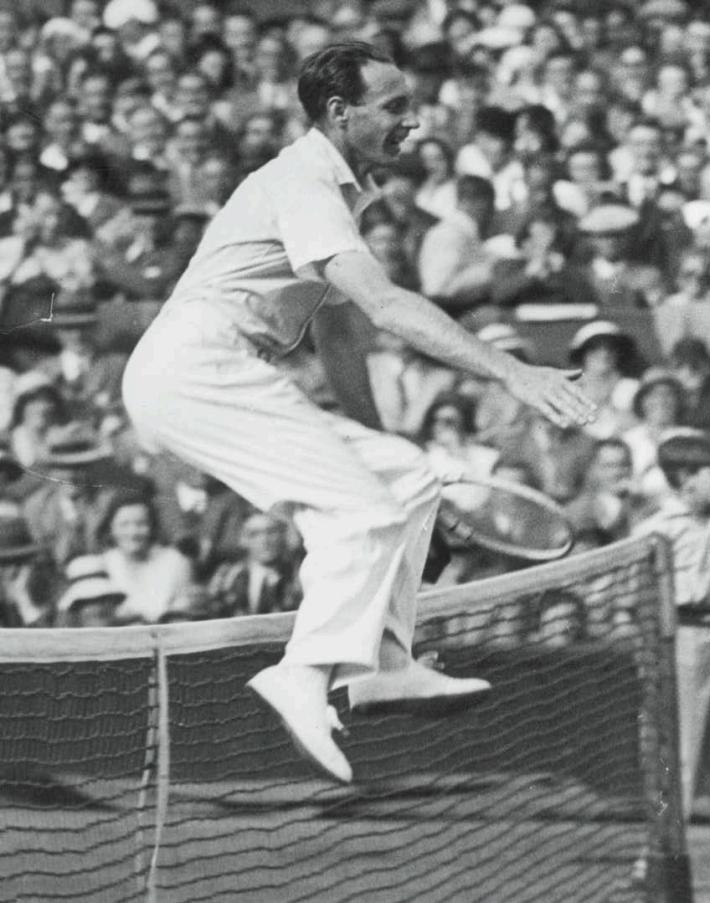
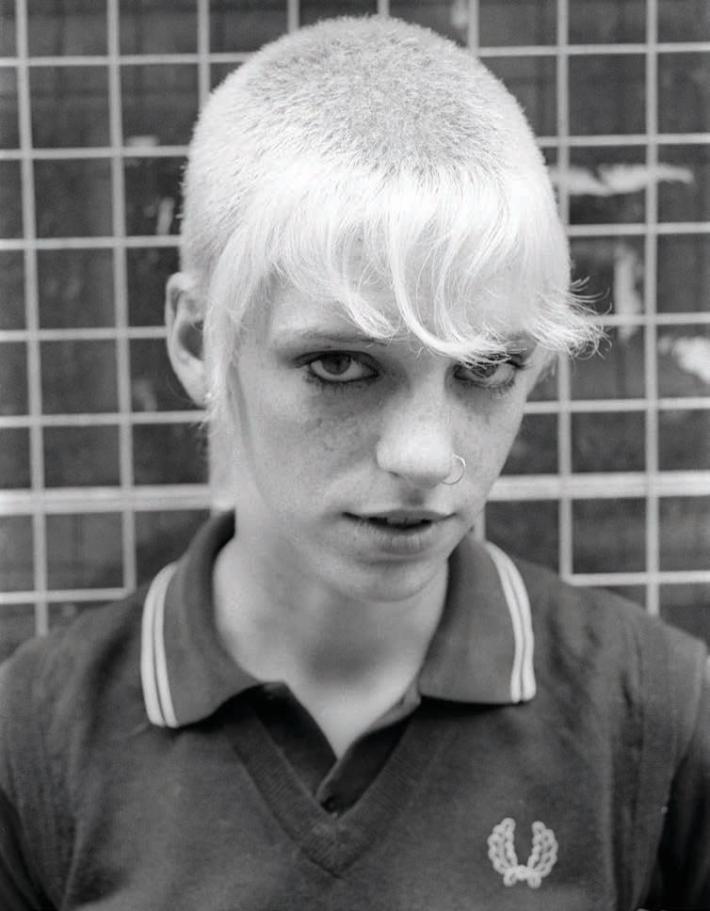
THE FRED PERRY SHIRT HAS NOTHING TO DO WITH TENNIS.
Don’t let anyone tell you any different. First of all, it’s a golf shirt, a polo shirt. A collared cotton garment, pretty tight-fitting, that occasionally has stripes on the collar and sleeves, and one that doesn’t come cheap. A broader perspective, focused on recent history of the United Kingdom, will show you that it’s also other things besides—such as a badge people wear to show affinity for one of Britain’s many subculture clans. Like certain bands and musicians, certain (ugly) political strains. But on the whole, in the U.K. and elsewhere, a Fred Perry shirt these days has almost nothing to do with its early history, and lots to do with its recent place in music, class, and politics. Tennis doesn’t play a part.
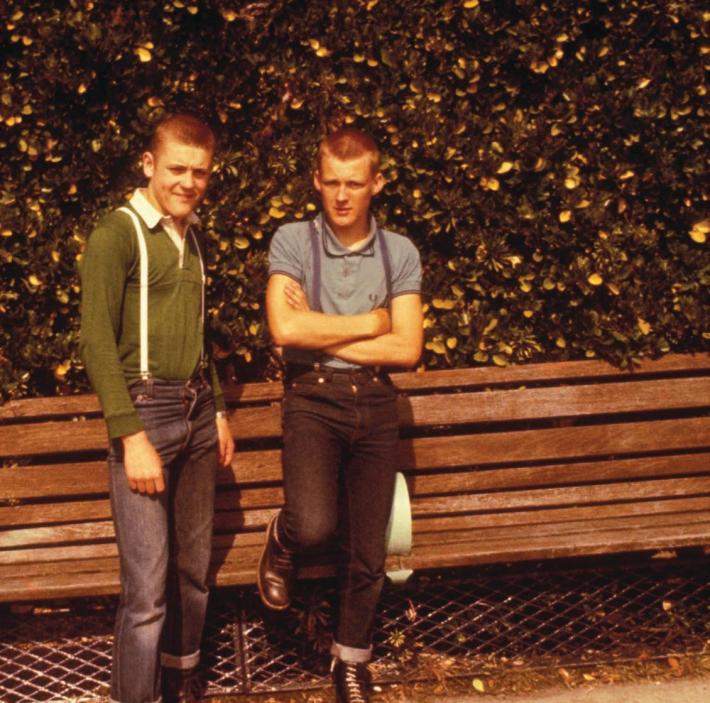
ONE THING, THOUGH: THE FRED PERRY SHIRT HAS EVERYTHING TO DO WITH TENNIS.
Tennis is involved down to the button placements. The shirt was designed by a three-time Wimbledon champion, successful Davis Cup captain, winner of 10 majors, the first player to win a Career Grand Slam. It’s a shirt worn by generations of top players; the company used to have a slogan on its shirt tags, “As Worn by Nearly All Wimbledon Players.” For a brief period, they even dressed a certain scrappy, pre-Lendl, Wimbledon-someday-maybe Andy Murray. The Perry shirt is one of tennis’ most enduring symbols, among the few to be adopted by our bigger global culture, right up there with the Stan Smith sneaker, the Lacoste polo, the tennis skirt.
So does the Fred Perry shirt matter to the history of tennis? Yes. Does tennis matter to the Fred Perry shirt? “The tennis element of the brand won’t ever leave us,” John Young, U.S. country manager for Fred Perry, told me. But the company barely makes tennis-specific clothes anymore. The shorts and shirts it does produce, the technical ones specifically designed for sweaty bodies, are sold only in America; no other market wants them, Young confirmed.
So what does it mean, if it means anything at all, when a shirt designed for one thing gets co-opted for another? Does the value of its heritage decrease, ultimately vanish?
And what happens when a clothing brand drifts away from its origins and finds itself in the hands of right-wing racist dickheads?
It was originally called a polo shirt—for good reason. In 1926, the seven-time Grand Slam champion René Lacoste, a.k.a. “the Crocodile,” conceived of a short-sleeved collared shirt inspired by the kind worn by polo players in London. Fred Perry made his version in 1952: cotton piqué, cut slim, designed not to “ruck up.” Asked later by the Queen Mum why he wore it, Perry replied, “Because, ma’am, it’s the shirt that fits.”
The laurel wreath on the left breast was adopted from the site of Perry’s greatest success, and also an early humiliation. The icon was the original symbol of the All England Club. Perry first won Wimbledon in 1934. When a person wins the championship, the Club presents them with a special All England tie. Perry being a working-class kid, not of the gentry, so embarrassed the committee that they left his tie on a chair in the locker room. Perry later remarked he overheard a committee member say, “The best man didn’t win.”
Later, the club apologized. Perry won the title again in ’35 and ’36. Fifty years after his initial triumph, a Perry statue was erected on the grounds. And until Murray won his first of two Wimbledon titles in 2013, Perry was the last British man to win the trophy.
“Fred Perry was an iconoclast and an anti-snob who made good from a working-class background,” said Elizabeth Wilson, author of “Love Game: A History of Tennis, From Victorian Pastime to Global Phenomenon. “Which was extremely unusual in tennis at the time, indeed unheard-of.” In part, Perry’s influence helped the game shake off its aristocratic past. It wasn’t just his wins, but his background, his image. “He was a bolshy character and traded on his good looks—and why not?”


For a period, as tennis settled into the professional era, many top players wore Fred Perry on court. Arthur Ashe. Bjorn Borg. Billie Jean King. Some players got special treatment, their initials stitched below the shirt’s laurel wreath, but that was the extent of compensation, aside (in some cases) from the free clothes—a different world from today’s multimillion-dollar war of attrition between Nike and Adidas and the rest.
But the shirt soon began to outgrow the game. Sportswear became streetwear, something fashionable. John Young largely credits London’s mods, the ’60s British subculture, for giving Perry a bigger audience. Mods were an extension of the beatniks. They were into R&B and blues music, and also fashion, looking a certain part—polished and sharp, riding around town on Italian scooters in tailored suits. The Perry shirt became part of the uniform, especially when the decade started to close and the mods evolved into hard mods. Though eventually they’d go by a different name, especially after the media discovered them: skinheads.
For many readers, “skinhead” likely brings to mind a neo-Nazi thug in Doc Martens. The image isn’t inaccurate. But weird as it may seem, the term originally referred to working-class London kids, mostly white but not entirely, who loved reggae.
Starting in the 1950s, there was a large migration to Britain of people from the Caribbean, particularly Jamaica. In London, Jamaicans got jobs working
side by side with the white working class. “Skinhead” was a product of those workers’ kids mixing, white and black. How do teenagers create identity? Clothes and music. Specifically, in the mid and late ’60s, Cockney kids were going to clubs with Jamaican kids and digging their style: clean-cut, precisely detailed. And in the hands of these proudly working-class kids, the look became subversive. The look was post-mod, anti-hippie, leaning away from “Swinging London.” Oddly enough, the look in part derived from American Ivy League—as if every tough kid on a London housing estate wanted to have his or her hair cut like an American astronaut.
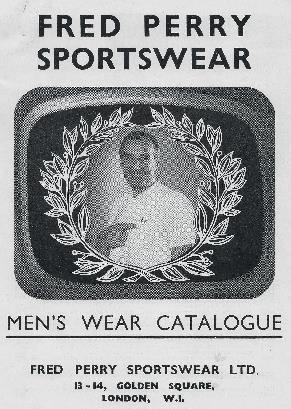
So a Fred Perry polo would be paired with work boots and crisp jeans or khakis—Doc Martens and Levi’s were still industrial garments—a clean wool cardigan and very short hair, girls included. It made sense: The Perry shirt had been designed by a working-class champion, a guy whose dad had been a cotton spinner in Stockport. And all of this was done while the head bobbed and the shoulders jerked to Jamaican music. To a point of popularity that a whole genre of reggae—ska—was created and marketed specifically to appeal to the burgeoning skinhead market.
But the broader society at the time was not, how do you say, reggae-friendly. Britain’s National Front, the whites-only, far-right political party, polled high. A skin-head look—with a Fred Perry or Ben Sherman shirt, braces (suspenders), and boots—soon became popular in rougher, poorer cities and towns beyond London. Football fans took up the look because you could buy versions of a Perry polo with collar stripes in the same colors as your preferred club. And as the late ’60s became the late ’70s, a new generation adopted skinhead, brought about a revival—people who didn’t care about its multicultural roots. A group that was overtly racist, liked to beat up people, beat up specific groups and colors of people. And then nationalist politics got involved, hooliganism spread, and a moral panic crept in—and much of it was to the horror of original skinheads, who watched racism infect a look they loved. But everyone kept wearing Perry.

Fred Perry isn’t reluctant to address the issue, but it’s nothing the company wants to talk about, especially the ugly bits. “We make a point not to talk about it because it’s not who we are,” John Young said, when I asked him about the racist side to skinhead history. He pointed to the diversity of people who figure in the company’s ads and partnerships, how Fred Perry makes a point of not selling to stores that may cater to a right-wing clientele. For the company’s 60th anniversary, they commissioned the director Don Letts to create a series of short films about Fred Perry’s place in British music and subcultures. One film in particular was devoted to how skinhead culture had emerged, evolved, then gone so swiftly downhill.
A zoology of British subcultures requires a very specific lexicon. Suedeheads, 2 Tones, casuals. The classifications probably matter only to Brits and those who love them, but the same can be said for the Perry shirt; end of the day, it’s just a polo. And yet it managed to stick around, rolling from the ’70s into the ’80s on the backs of both punks and preps. Then came the ’90s, and the Perry shirt went mainstream: You saw it on Britpoppers like Oasis and Blur, Radiohead’s Thom Yorke. Ten years later, groups like the Streets and the Arctic Monkeys wore it as a nod to their non-posh roots. Amy Winehouse designed her own line of Perry clothes. It’s as though each subtribe of British pop to cross the magazine covers found a way to make the Perry emblem theirs—a gene in British music DNA that kept getting switched on in each round of evolution—in a visibly aesthetic, national way that American and other pop musicians aren’t so easily linked.
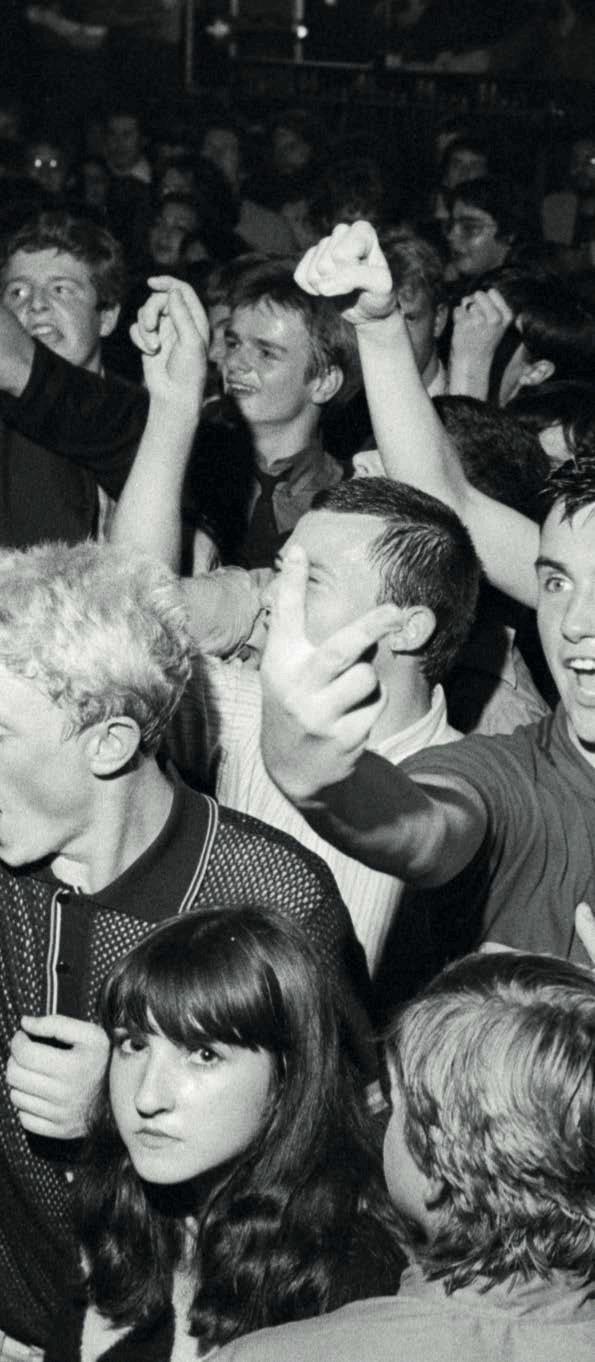
Personally, polo shirts make me cringe (and I own several). A polo says “country club” most of all in my mind; I can’t not see it. It’s my parents’ fault—they hate country clubs. In the ’80s, my dad owned a pair of Lacoste shirts. My mom ripped off one of the crocodiles and sewed it on top of the other, so the two could be humping. It extends to tennis, too. Among the reasons I’ve preferred Nadal to Federer is that Fed’s constant collar just fits too neatly with his Prince Charming image, his good manners and perfect hair, his Rolex, his Mercedes, the fact that he never breaks a sweat. Does Switzerland, no matter its lovely mountains, not slightly represent everything repugnant about tennis culture—elitism, stuffiness, wealthy trappings, vast whiteness? I mean, I love Wawrinka, but my affection’s as much about his game as the pitted face, the plaid shorts, the racquet bashing.
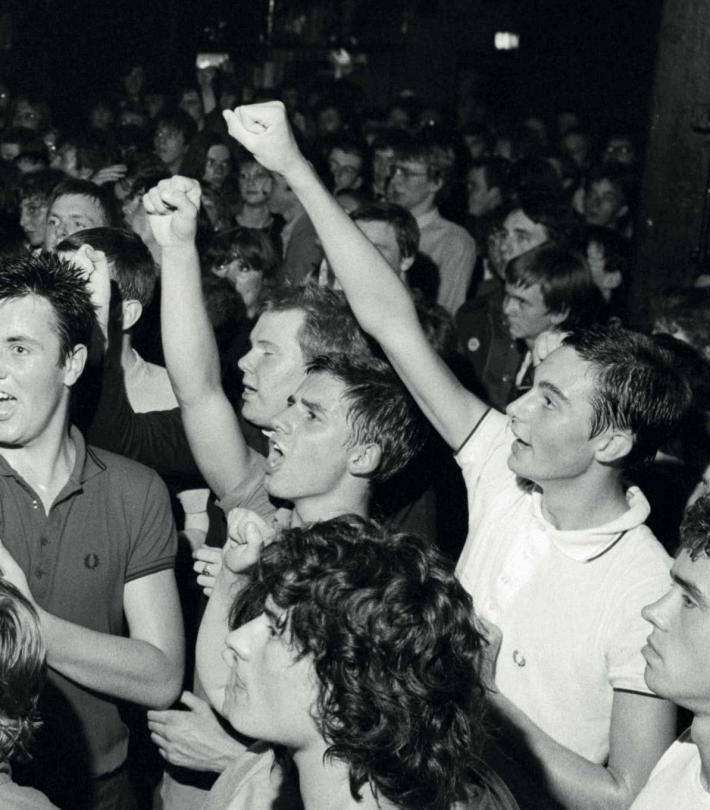
In 2012, Jason Diamond, sports editor at Rolling Stone, did an in-depth comparison of the Perry shirt and the Lacoste polo. “People associate Fred Perry with rebellion and youth-fulness, and that relationship is why the
company has thrived for so long,” he wrote. I asked him what he makes of a fellow American when he sees them on the street in a Perry shirt. “I want to ask them what kind of music they like or grew up liking,” he said. “I’ve always had this theory—that I know is totally flawed—but I just assume they were into punk, or had a skinhead phase, or they were the only kid in their high school to know about the Stone Roses and Primal Scream. When I see the logo and the fit of that shirt it’s literally the first thing that rushes through my head.

Like I might have something in common with that person.”
The origin story of the Fred Perry shirt has more to do with adoption than birth. In the course of reporting this story, I emailed several dozen people in my address book, included a picture of a Perry shirt and asked if they knew who made the shirt, and if they had any associations. Of several dozen Americans on the chain, only three recognized the logo. Among the Britons—about a dozen—nine got it right. Americans generally associated the shirt with preppies and country clubs. One person wrote, “Kids named ‘Chase.’” The British associated it with music, football, “drunk people,” and “that kind of English, street, slightly gangster thing.”
Perry once said, “I’m a great believer in trying to look the part. It’s a fetish with me.” The quote’s almost prescient about his namesake shirt’s fate. The Perry shirt may be a champion, but it’s still aspiring. Aware of its roots, but in a quiet way. How it’s perceived by others is up to them, what they think they know about the person underneath. Where I see country club, someone else sees rude boy, someone sees a Morrissey fan, someone sees a beloved shirt their dad wore to football matches. And maybe someone sees tennis in there somewhere, too.
Next year’s Wimbledon isn’t far away. Am I the only one who’d love to see Nick Kyrgios in Perry gear?
Rosecrans Baldwin is the author of You Lost Me There and Paris, I Love You but You’re Bringing Me Down. His next novel, The Last Kid Left, is forthcoming in June 2017.
Featured in Racquet Issue No. 2



